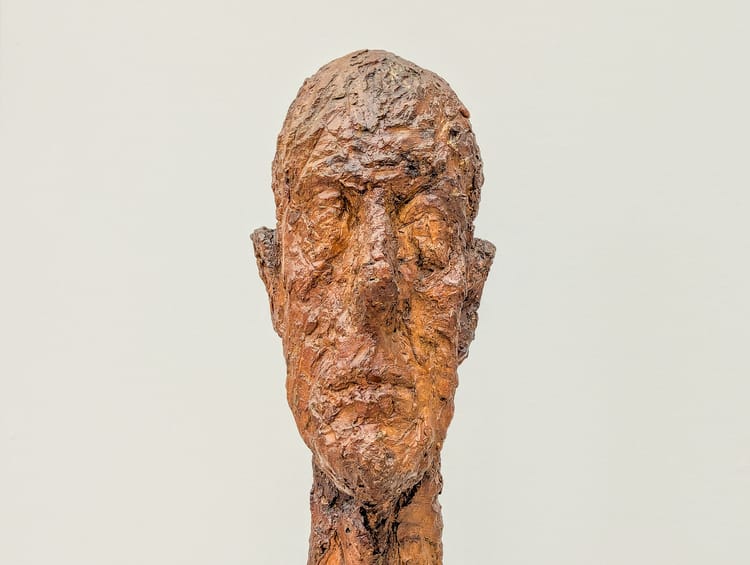What Will You Make That Lasts? (Newsletter 073)

Greetings friends.
It is far easier to destroy things than to create something enduring. This is a lesson worth remembering. Particularly when we're unhappy with how things are going. When the system isn't working well for many people. When our instinct is to vent our frustrations, to rampage and break things.
This week's Guest Post from Kathryn Eriksen provides a beautiful alternative to tearing things down. As she writes, "Instead of constantly searching for the answers to your problems outside of you, be still and look within." Wise words in a post full of them.

America's three key founding documents illustrate well our points today. You can walk right up to the original versions at the National Archives Museum in Washington, DC. Doing so should give pause to even the hardest-hearted anarchist. I'm more pragmatist than anarchist but I too was heartened at this physical reminder we absolutely can build systems that endure.
The Declaration of Independence Started it All
The Declaration of Independence aired the American colonists' frustrations. It broke the relationship with Great Britain and unleashed a bitter war. But even here, the Declaration was primarily a creative act. Why? Because it described the very foundation for free people to protect their inherent rights:
We hold these truths to be self-evident, that all men are created equal, that they are endowed by their Creator with certain unalienable Rights, that among these are Life, Liberty and the pursuit of Happiness.
That to secure these rights, Governments are instituted among Men, deriving their just powers from the consent of the governed,
That whenever any Form of Government becomes destructive of these ends, it is the Right of the People to alter or to abolish it, and to institute new Government, laying its foundation on such principles and organizing its powers in such form, as to them shall seem most likely to effect their Safety and Happiness.
In sum (1) we have inalienable rights (life, liberty and the pursuit of happiness), (2) we create governments to protect these rights, and (3) we will not tolerate governments that trample our rights.
The Constitution Sets Out the Structure
The Constitution created our central federal government structure, with its three branches: the legislature, the executive, and the judiciary. The first states had only loosely joined together in the earlier Articles of Confederation, and disputes arose among the largely independent states.
In establishing a strong federal government, the founders struggled to balance the government's powers against states' and citizens' powers. Their answer was twofold: strictly limit each branch to just their written powers and require the branches to cooperate to prevent any one branch from gaining excessive influence.

So-called checks and balances are meant to ensure the government remains accountable to voters and that small majorities do not create tyranny for those temporarily in the minority. For example:
- Members are elected to the House of Representatives proportional to their state's population. States with more citizens have more representatives. They serve for just two years and so are typically sensitive to citizens' wishes. In contrast, each state elects two Senators who serve for six years. Small states have an equal Senate voice to populous states.
- Passing a new law requires both the House of Representatives and the Senate to agree to the exact same text. If one chamber of Congress amends a draft bill, the other chamber must vote to approve the same text. After Congress passes a bill, it goes to the President for approval. If the President does not sign the bill, it returns to Congress, where a two-thirds vote can override a Presidential veto.
- The President appoints judges to the federal judiciary, but appointments require the approval of the Senate. Similarly, the President appoints the head of federal agencies, but these agencies are established (and funded) by acts of Congress.
The Bill of Rights Sets Out Individual Rights
The Bill of Rights was drafted to help ensure states would ratify the Constitution. The Bill of Rights represents the first ten amendments to the Constitution, which set out individual rights that the government cannot infringe.
Although the divided government and system of checks and balances were designed to prevent the federal government from gaining too much power, many delegates wanted to see essential individual rights reflected in the Constitution itself. Thomas Jefferson wrote to Madison that a bill of rights was
what the people are entitled to against every government on earth
The rights have become entwined in the fabric of Americans' daily lives. In movies and TV shows, in everyday conversations, and in courtrooms, you hear repeated references to our constitutional rights. "I know my rights." This is thanks to the Bill of Rights, and we should be thankful the founders agreed to restate what many thoughts was self-evident.
We Interpret the Constitution Regularly
The Constitution is a living document in two senses. We can amend it but as you can imagine this is a difficult and time-consuming process. We've done it just seventeen times since the Bill of Rights.
Much more frequently the judiciary interprets the Constitution as it is applied to countless situations the founders did not imagine. For one, the Supreme Court has the ultimate authority to determine if a law duly passed by Congress violates the Constitution. If the Supreme Court determines a law is unconstitutional, the law is invalid.

And the Supreme Court spends significant time deciding disputes about what the Constitution itself actually means. What government actions are considered to infringe our free speech rights or right to bear arms? Where in the Constitution will we find the right to same sex marriage or an abortion?
The Revolutionaries Within
Since the Declaration of Independence, America has fought to first establish and then preserve itself as a nation. We have fought against many enemies, not least those within our own borders, fellow citizens.
From the first fights among states wishing to retain strong sovereignty reflected in the Articles of Confederation to those arguing against ratification of the Constitution, we've always faced detractors. Southern states seeking to secede led to the Civil War and we made pivotal amendments to the Constitution in the aftermath. The Civil Rights movement led to landmark legislation that we're still trying to meaningfully implement decades later.
There's always someone saying the system doesn't work perfectly. And they're almost always right. Some work to change the system from within, while others work to destroy it.
Notice how little the revolutionaries of destruction say what will take the place of our current system. That's because they either don't know or they have an idea but know we wouldn't like it. We don't fix imperfect systems with either tyranny or rule by our enlightened betters.
Our system is imperfect because individuals are imperfect. The magic lies in our having created a system that allows imperfect people to work together towards a better future.
We probably won't reach perfection. But nor should we lightly destroy what we have taken some 250 years to build.
Be well.
PS – This week's ACC Docket article, Why Aren't More Pharma Companies Nonprofits? shows how incentives can pervert even the best-meaning individuals and companies. What incentives do those people hold who work to tear down our system?

Thanks for reading and thanks for engaging! Leave a comment or reply to this mail. If you got this from a friend and want more, subscribe to the fabulous weekly newsletter.







Member discussion